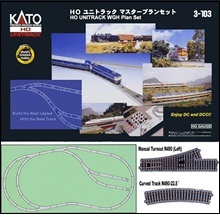Beginner's Guide to Model Railroading
What Is a Track Plan?

Some of the best track plans come from the Internet and contain pages and pages of plans in different scales and in sizes from 4’ x 8’ sheets of plywood to basement empires. HO-scale is the most popular scale and fits nicely on a 4’ x 8’ train table (shown above) with ample space for bridges, trestles, buildings, and lots of other accessories. Search the Internet with phrases like "HO-scale track plans" or "prepackaged HO-scale track plans." Of course, if you run N-scale trains, use the N-scale reference when searching track plans.
After building your train table, the very next thing you should do—even before purchasing a starter kit or separate locomotives and rolling stock—is to select a track plan. Keep in mind the kind of layout you wish to create or the theme of your railroad. Will it be a coal mining railroad with lots of coal cars, coal mines, coal plants, and piles of coal (simulated coal can be purchased in bags for model railroading layouts); will it be a city or suburban layout with passenger cars, lots of buildings, a railroad station, trestles and bridges, and gate crossings; or will it be a military railroad with flat cars carrying tanks and trucks, and a military base with fighter jets and helicopters? Your track plan is important to how your trains will meander around and over all the other structures and accessories that you include for your selected theme.
Continue with this Railroading Workshop by clicking on the link below:
What Is a Starter Kit?
